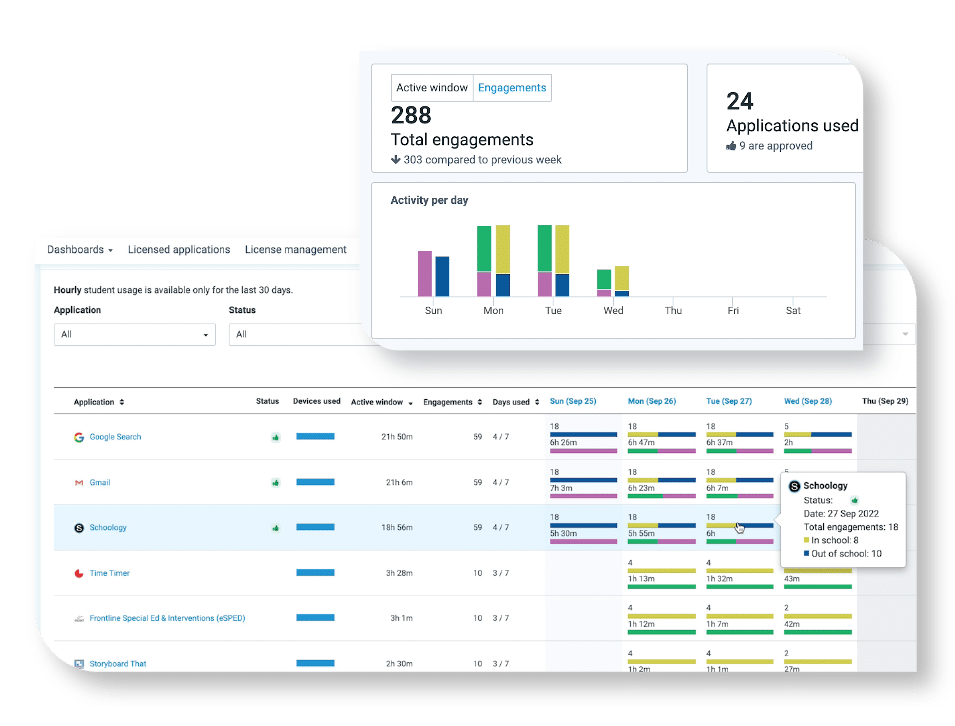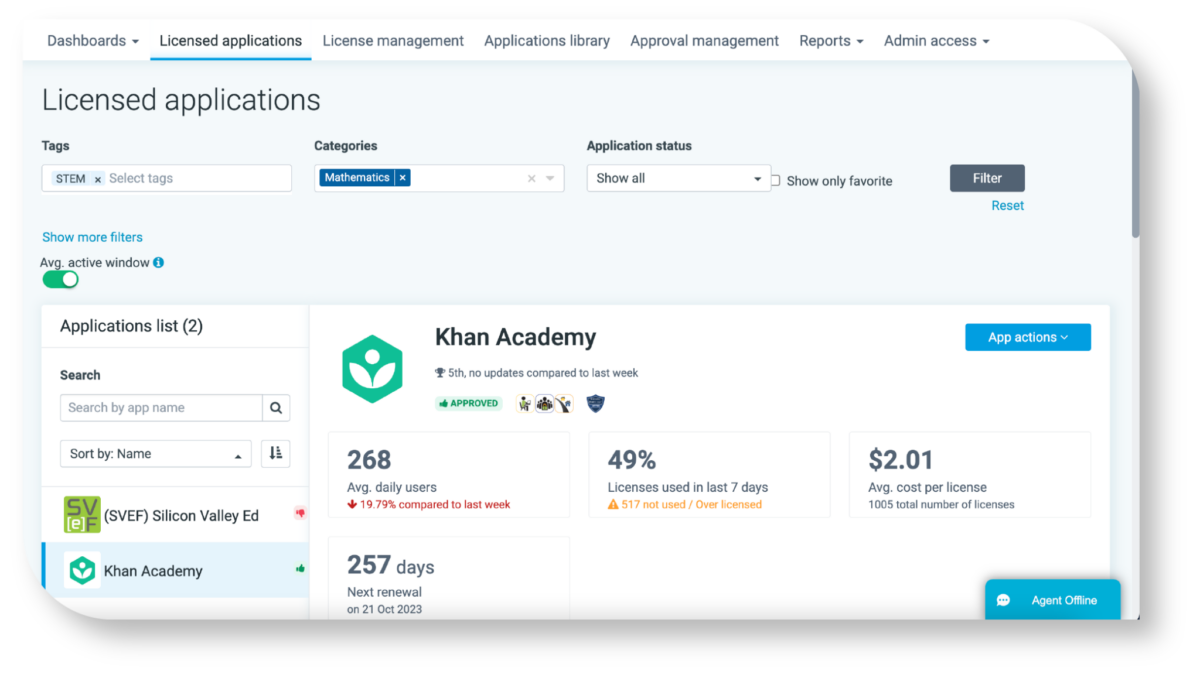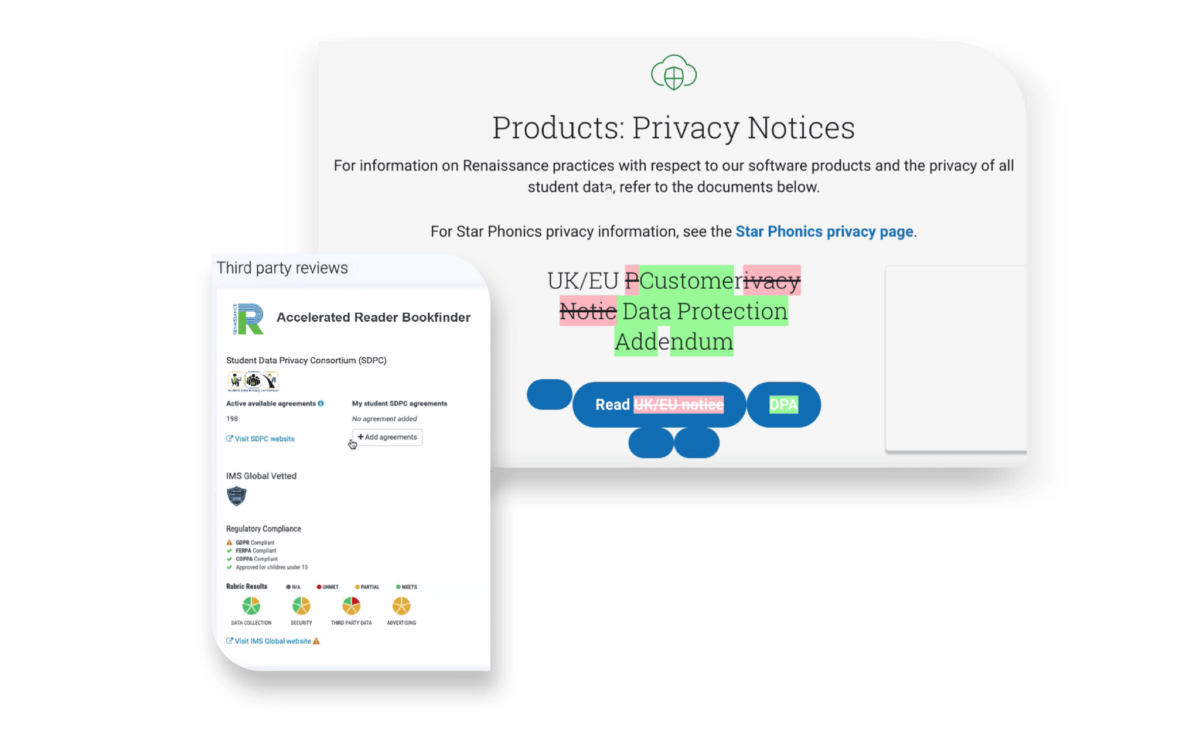Budget for your school district’s apps using Lightspeed Digital Insight
As school budget planning for the 2023-24 school year is underway, IT and curriculum leaders are evaluating their district’s current school apps and resources to determine which apps to keep and which to replace with new ones. With so many educational apps available, it can be hard to know which ones to choose. To help make the decision-making process easier, this review features data pulled from 108 customer school districts as determined by Lightspeed Digital Insight.
When evaluating and budgeting for your school district’s apps list, leaders should consider the following: adoption, price (free vs subscription), features, redundancies, and privacy policy data collection. These categories are crucial to ensuring every dollar is used efficiently and effectively—and safely.
What does Lightspeed’s Top 20 K-12 Apps list reveal?
- Adoption: Google Workspace is the most popular suite followed by YouTube, Clever, and Kahoot.

Easy overview of all your apps
View every app in use on your network across all operating systems and quickly identify the most used apps, and which are being utilized across campuses, grade levels, and individual students with Lightspeed Digital Insight.
- Price: Most of the apps offer both free and paid versions, ~50% only offer free versions, and only two require subscriptions.
- Features: Most apps and sites offer features like game-based learning, video lessons, and virtual tutoring. Basic features are provided by free versions, with more extensive features unlocked by paid subscriptions.
- Redundancies: There are several similarities across apps.
- Curriculum apps: Nearpod, Pear Deck, Khan Academy, ABCya
- Productivity apps: Google Workspace, Microsoft Suite
- Research apps: Wikipedia, Encyclopedia Britannica
- Quiz apps: Kahoot, Quizizz, Quizlet
These are all very important considerations with your trying to trim the budget for your school district’s apps.

Compare app categories
Compare categories of apps with Lightspeed Digital Insight. For example, review how all the math or STEM apps compare in terms of usage metrics, how much you are paying, and what value you are receiving.
Privacy Data Collection: Nearly all (91%) of apps had at least one privacy policy change. Many had three changes to their policies.

Streamline data privacy management
Streamline data privacy management with Lightspeed Digital Insight, the only edtech management tool to provide policy scanning with change notifications, side-by-side versions, and highlighted changes, so leaders can proactively protect students’ personally identifiable information (PII) from getting into the wrong hands.
While this is evaluation is focused on the top 20 most used apps across Lightspeed client districts, it’s important to note that Lightspeed Digital Insight data revealed most districts actually use 2,000 apps in total, with 300 of them used 99% of the time, and 1,700 additional apps used at least once. This data indicates that while a number of apps are well-known, there are still many more being used across the district, and given the infrequency of their use, may not be well-known by district leaders. It also provides valuable insight into app usage in educational districts and can be used to better inform decisions about which apps should be adopted and implemented, let alone how to budget for your apps. Download the full Edtech App Report to see emerging trends impacting app usage in K-12 and learn what it may mean for your district.

Identify top apps
- Google Workspace for Education provides a suite of cloud-based tools for K-12. The tools and services include messaging and collaboration apps, such as Gmail, Google Drive, Google Calendar, Classroom, and so on. Offers free and paid features.
- YouTube can be used to supplement traditional teaching methods and engage students by providing access to interactive videos, tutorials, and other educational content. Offers free and paid features.
- Clever is an education technology platform that provides a secure connection for schools, streamlines workflows, and offers personalized learning for students and easy access to educational products for educators. Clever is free for school districts.
- Kahoot is one of the most popular sites for gamifying the classroom. Teachers create games and quizzes and students answer them on their mobile devices. Offers free basic, pro, and premium options.
- Wikipedia is an online encyclopedia that contains a vast amount of knowledge and information on a wide variety of topics. Wikipedia is free to access.
- Microsoft Suite for Education is a suite of tools designed to help educators and students create, collaborate, and communicate. It includes Word, Excel, PowerPoint, OneNote, and other programs designed to enhance productivity, collaboration, and learning. Offers free and paid versions.
- Quizizz is a learning platform that offers multiple tools to make a classroom fun, interactive and engaging. Teachers can create lessons, conduct formative assessments, assign homework, and more. Quizizz is free to access.
- Facebook is a social media platform educators can link to and store classroom slides, discussions, and other materials that students can access if they are absent or need to review. Educators can also post educational videos and links that are relevant to the topics currently being discussed in class. Facebook is free to access.
- Quizlet allows educators to create multimedia interactive online quizzes in seven different engaging styles. Free for a basic account.
- Twitter is a popular social media platform used by over 126 million people daily for short bursts of information. It can be used to extend learning, for research, feedback, reminders, connecting classrooms, keeping parents informed, summarizing information, subscribing to hashtags, and creating a classroom hashtag. It can also be used for creative activities like writing haikus or tweeting as a historic figure. Twitter is free.
- Adobe is known for its multimedia and creativity software products. Popular products include Photoshop, Acrobat Reader, and Creative Cloud. Adobe has subscription-based pricing options.
- Pinterest boards are great for classroom collaboration to aid in creative team brainstorming, research projects, group projects, digital student portfolios, peer feedback, virtual field trips and more. Offers free access.
- Cool Math Games offers thousands of strategy, logic, trivia, and number games that are both fun and mentally stimulating, helping to build skills such as pattern recognition, logical reasoning, memory recall, strategy, and math. Offered free.
- Booklet is an exciting new take on the modern classroom review game. It aims to match action with education to create the ultimate learning experience. Booklet offers free access.
- Encyclopedia Britannica is an English-language encyclopedia of general knowledge which can be used in the classroom to help students explore a wide range of topics. Offers both free and premium subscriptions.
- Nearpod helps educators make any lesson interactive whether in the classroom or virtual. A teacher can create interactive presentations that can contain quizzes, polls, videos, collaborative boards, and more. Nearpod offers free and paid options.
- Pear Deck is an interactive presentation and lesson delivery tool that can be used via the web or integrated with other programs, allowing students to join teachers’ sessions with codes and follow along with the teacher’s slideshow on a classroom screen. Pear Deck offers free and paid options.
- Google Translate enables ELL students to translate sentences, documents, and even websites from one language into another in a matter of seconds. Offered for free access.
- Khan Academy offers practice exercises, instructional videos, and a personalized learning dashboard that empower learners to study at their own pace in and outside of the classroom. Offers paid subscription pricing.
- ABCya is a free educational games website for pre-K to 6th-grade students. Content is organized by subjects including letters, numbers, holidays, strategy, and skills. Offers free and paid options.
5 Steps To Reviewing Your Digital Learning Ecosystem and Preparing Your 2023-2024 Budget: Download Now

